Introduction
Increased occurrences of extreme weather and natural disasters have been directly linked to climate change. Since the energy sector produces two-thirds of global greenhouse gas emissions, addressing its carbon footprint would slow down the rate of global warming. The world has heralded Renewable Energy (RE) as a key solution to this global crisis, but it has its own limitations. RE like solar and wind are variable in nature, which results in challenges in stabilizing the electrical grid. Upon decommissioning, RE technologies also pollute the environment, contributing to global warming. Photovoltaic panels leech toxins in e-waste landfills, fiberglass blades of wind turbines and the structures of ocean turbines languish indefinitely in landfills.
Hypothesis
The integration of various renewable energy systems together with industries would allow for synergies during manufacturing, operation, decommissioning and recovery, ultimately achieving a more sustainable cradle to cradle system.
Thesis Statement
In geographical regions of the world where climatic conditions are ideal for multiple types of Renewable Energy (RE) generation, the Energy Revolution seeks to transform fossil-fuels based economies to renewables-based ones. End-of-life management practices will be integrated into the life cycles of RE systems to achieve net-zero carbon emissions. The transition also advocates for the decarbonization of the most emission-intensive manufacturing processes. Innovative conversion of existing infrastructure to support alternative programs will enrich local communities as well.
Australia as a testbed
Western Australia was chosen as a testbed to demonstrate this energy transition. The specific region chosen contains the City of Kwinana, Shires of Murray, Waroona and Collie, which contain pollutive industries. Enhanced industrial symbiosis established within this region creates constant synergies between industries, through every phase of the Energy Revolution. In particular, the conversion of Kwinana Industrial Area into entertainment-based programming has been detailed as an example. The specific site chosen to showcase the Energy Revolution in greater detail is Kwinana Oil Refinery, where the oil refinery transitions into an integrated algae biofuel refinery along with synergistic programs.
Site Strategies
Six respective zones complement this main program of a biofuel refinery since their water demands match the evolving quality of the water as it traverses around the site.
The zones are the following:
- Central Point & Historical Zone
- Central Discovery Zone
- Turbine Manufacturing & Recycling Zone
- Coastal Recreational Park & Jetty Observatory Zone
- Algae Farm Park & Algae Biofuel Zone
- Water Park
Five different routes have also been planned to deliver unique experiences for visitors. Each route has a distinct characteristic, with the aim of creating educational yet entertaining experiences for visitors.
The routes are detailed as follows:
- Reuse of Water Route
- RE Technology End-of-life Route
- Algae to Biofuel Route
- Renewable Energy Route
- Historical Route
Conclusion
Kwinana Oil Refinery thus illustrates how carbon-intensive industries and infrastructure can transition into renewable-based ones. Innovative and strategic programming are hence key tools that will create vibrant destinations for local communities and visitors alike to enjoy. In doing so, the Energy REvolution will limit the impacts of anthropogenic climate change and help realize global warming agendas.
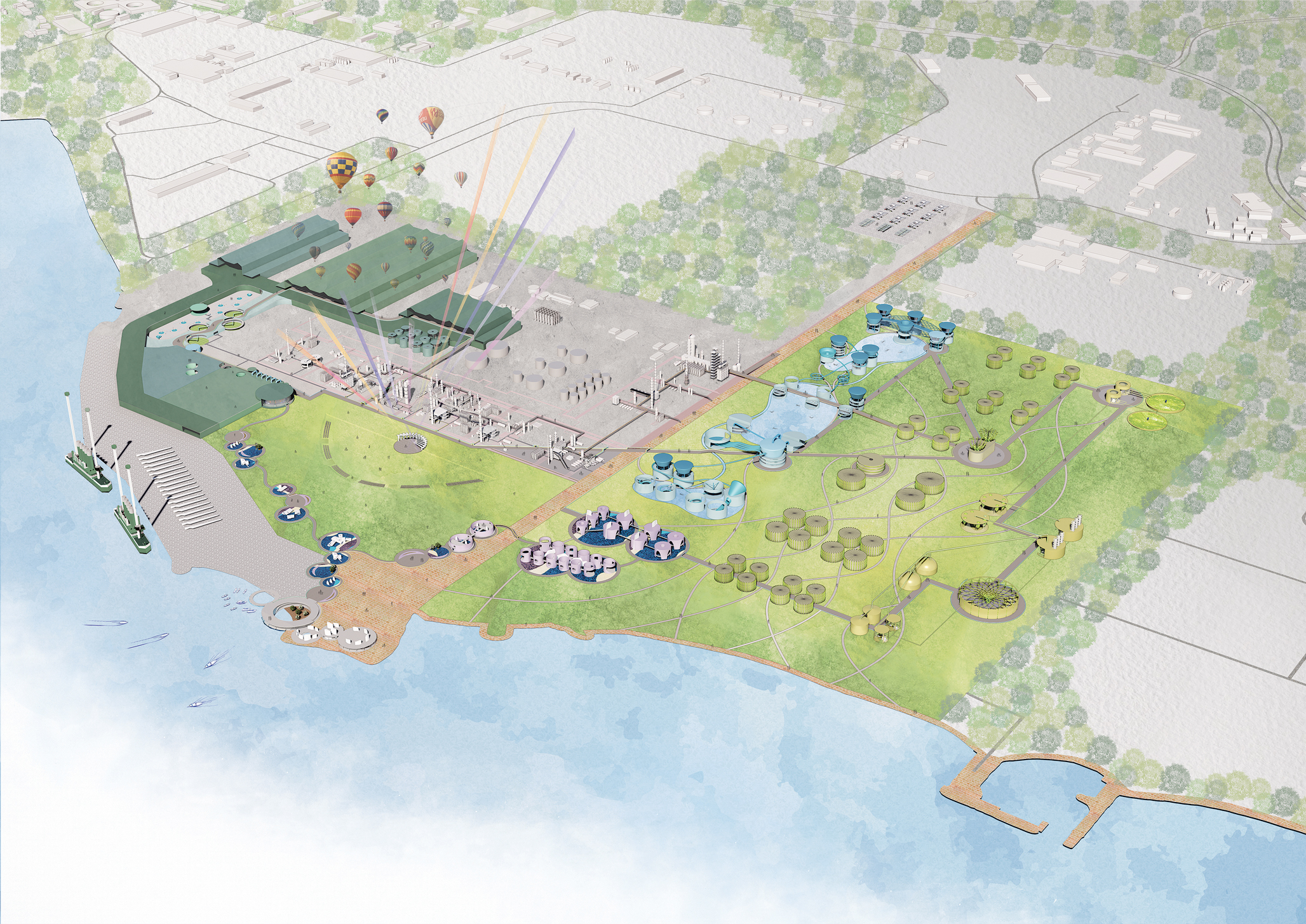

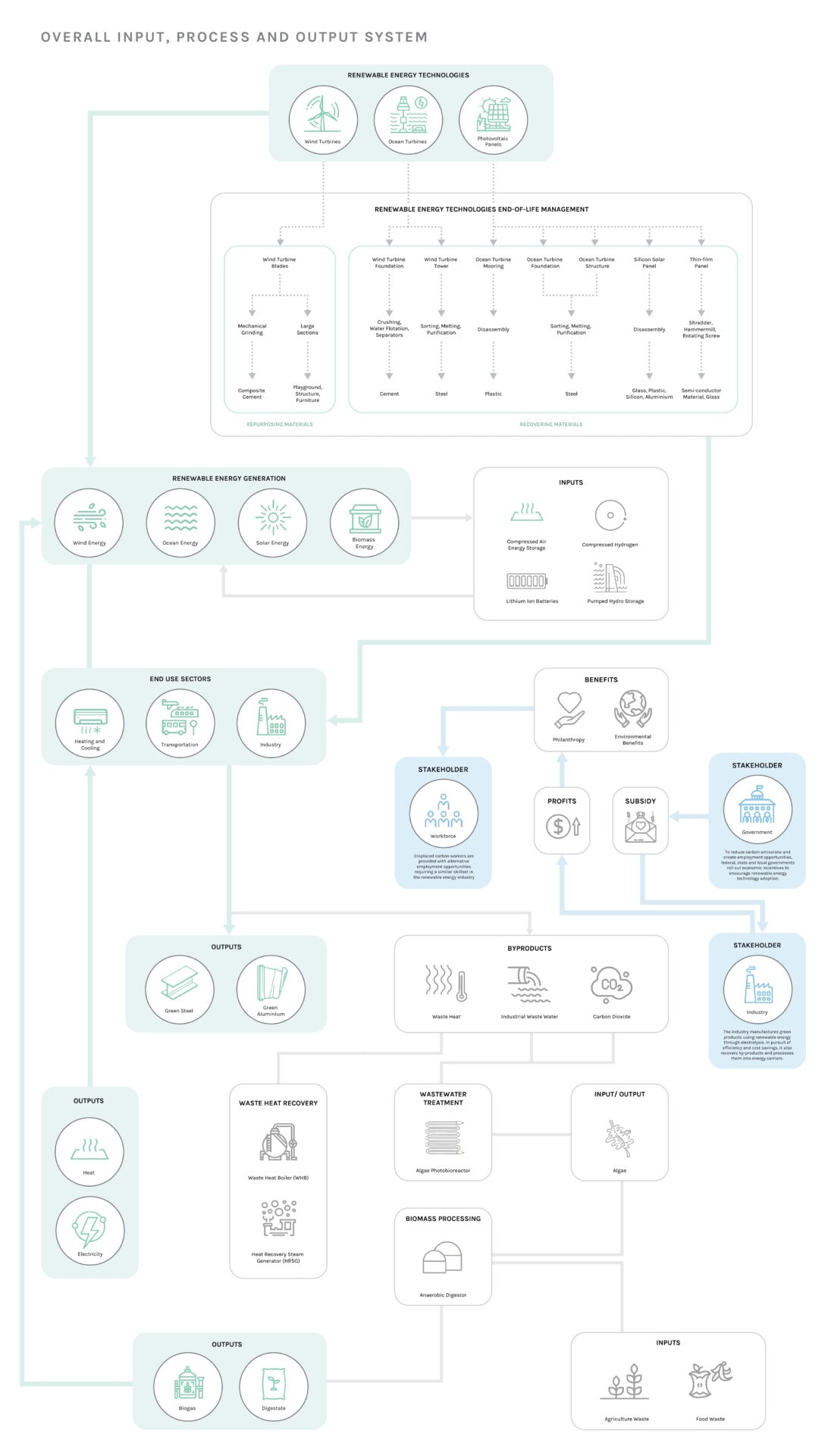
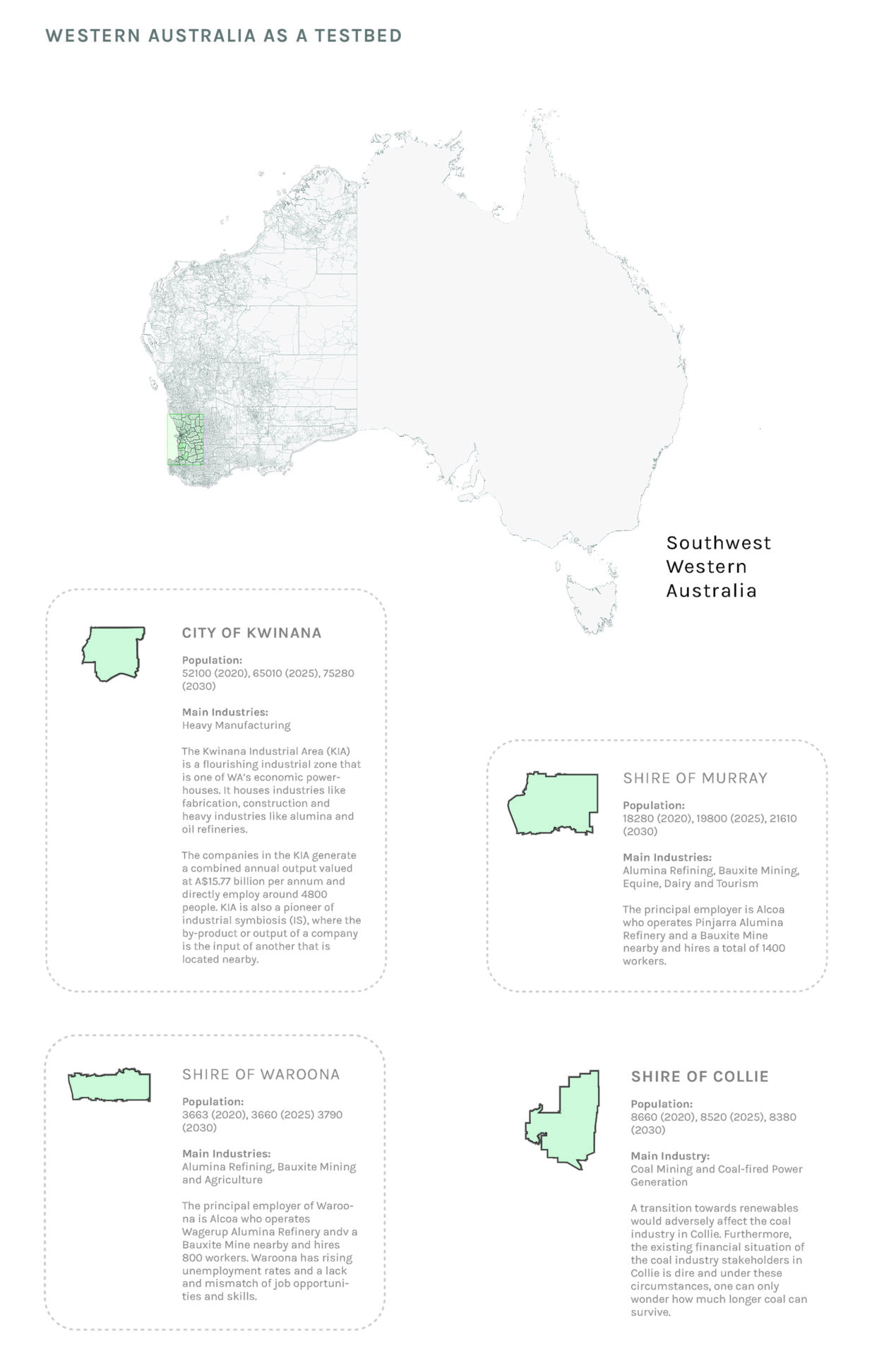

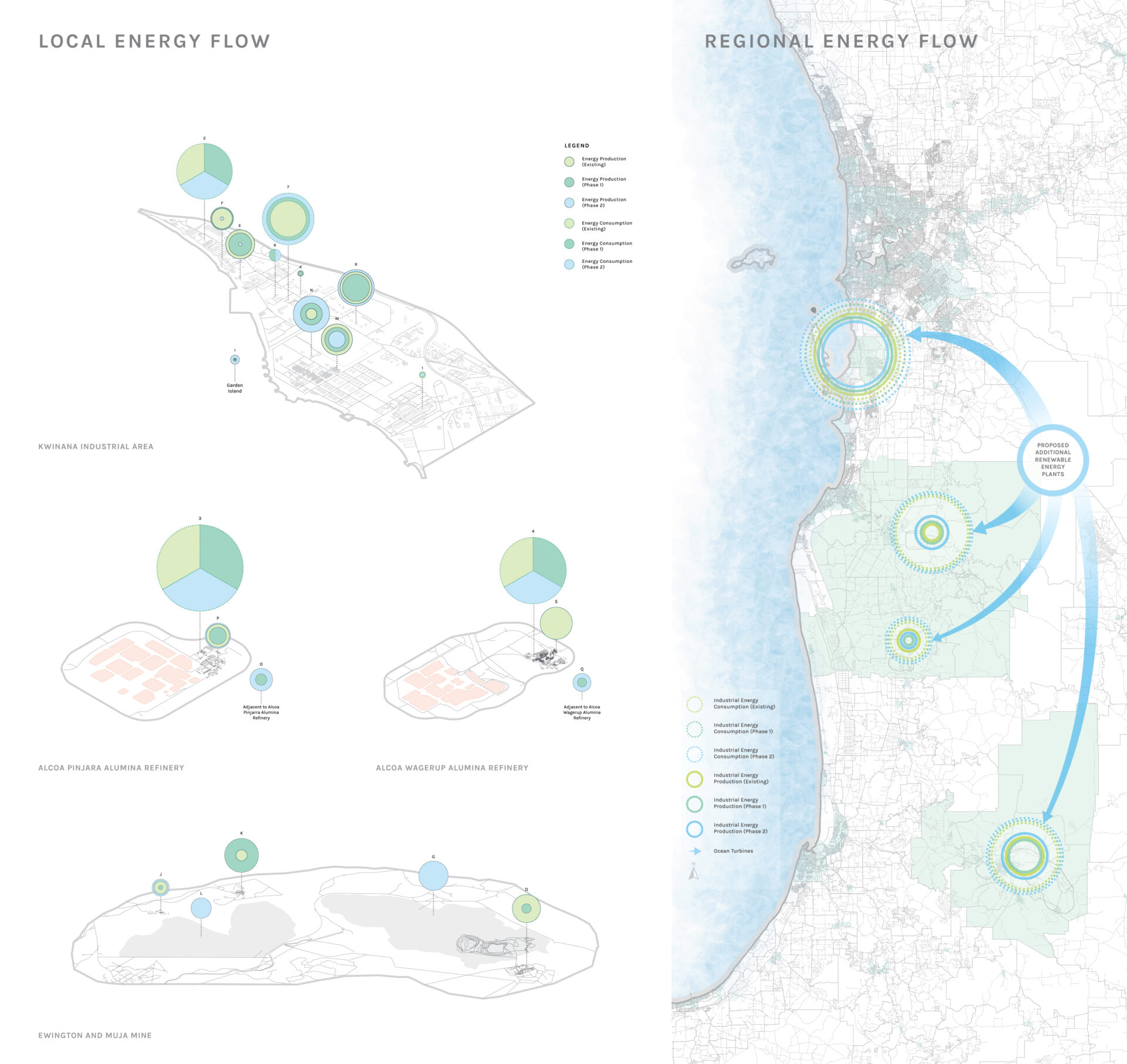
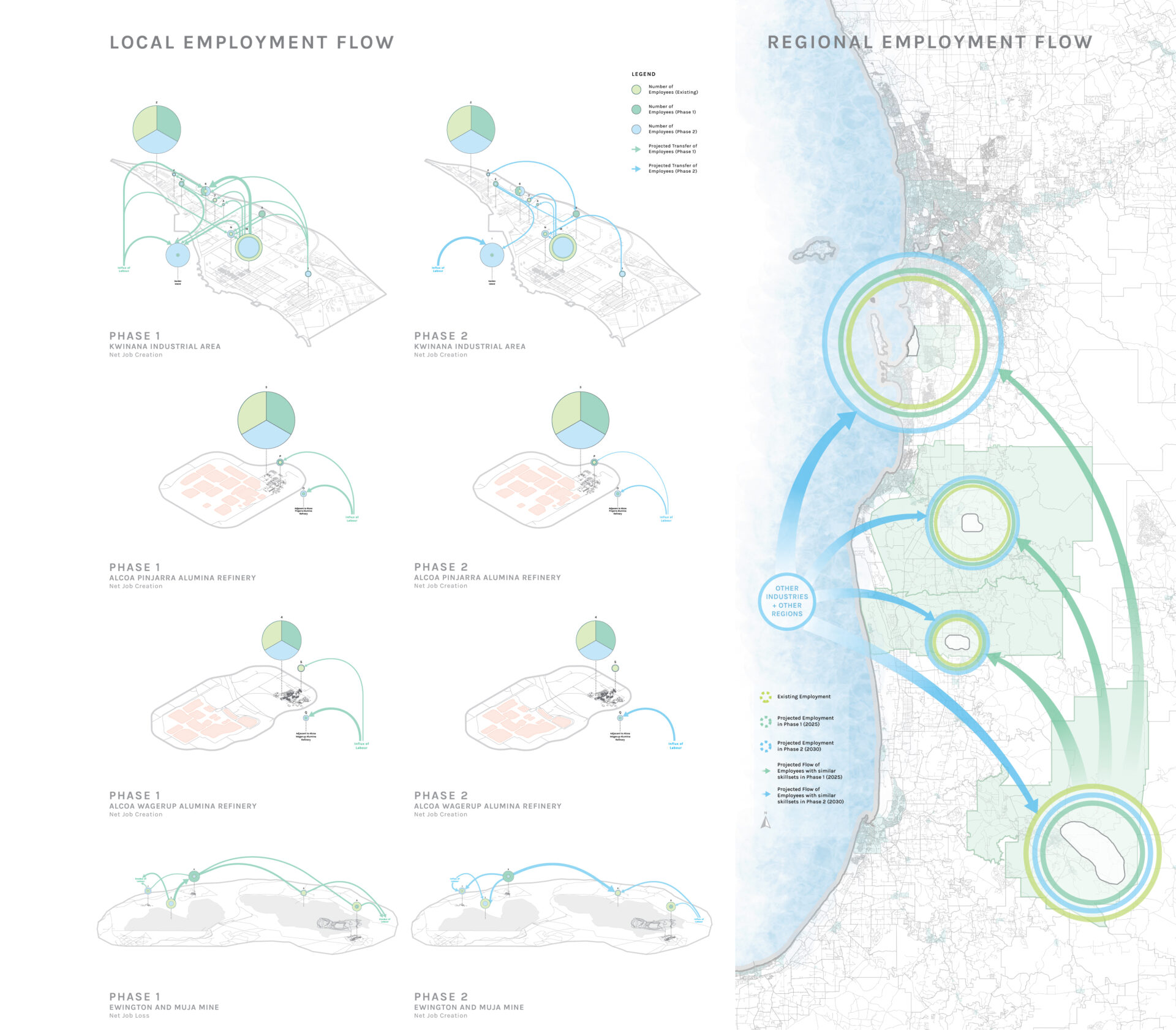
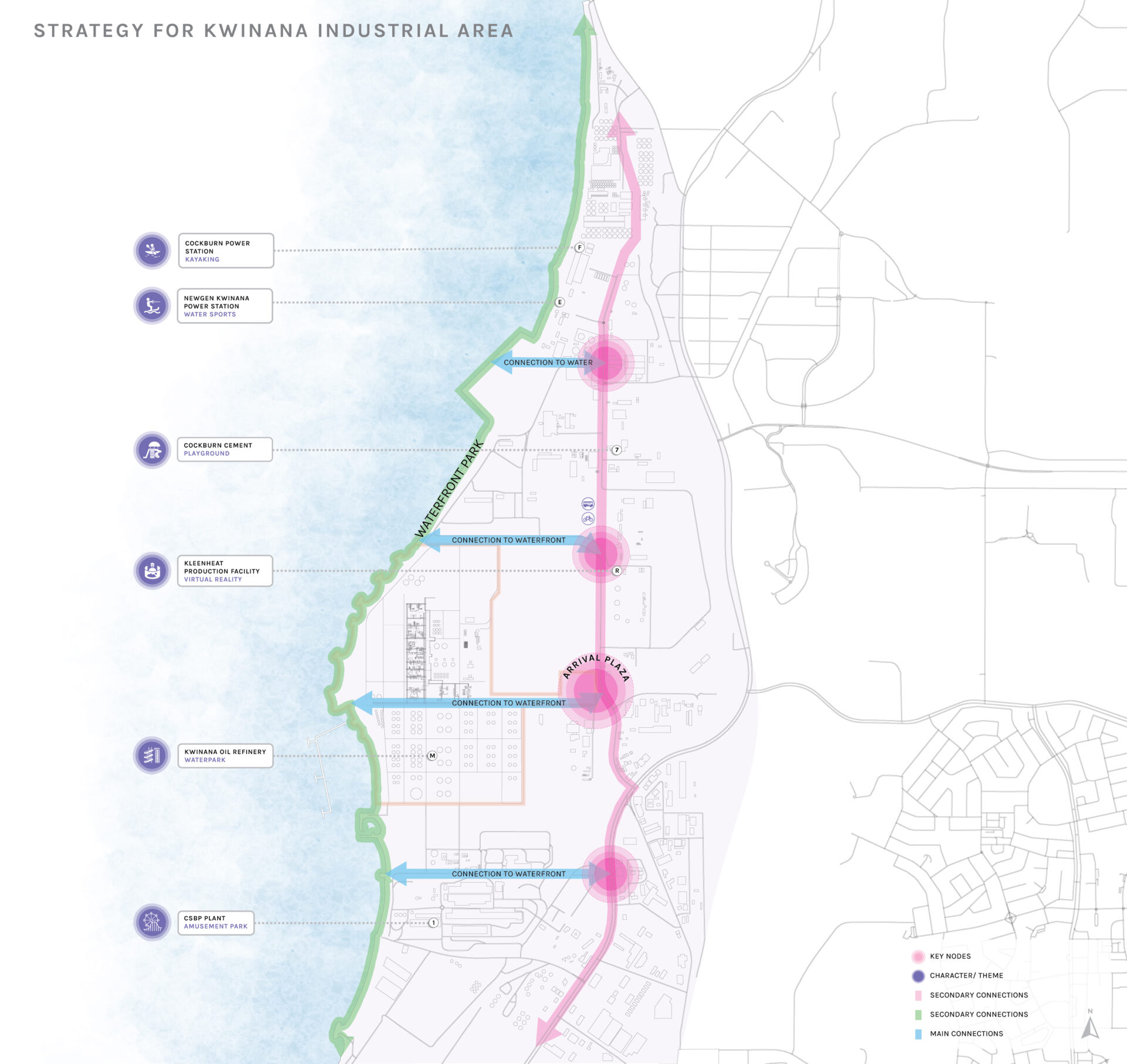
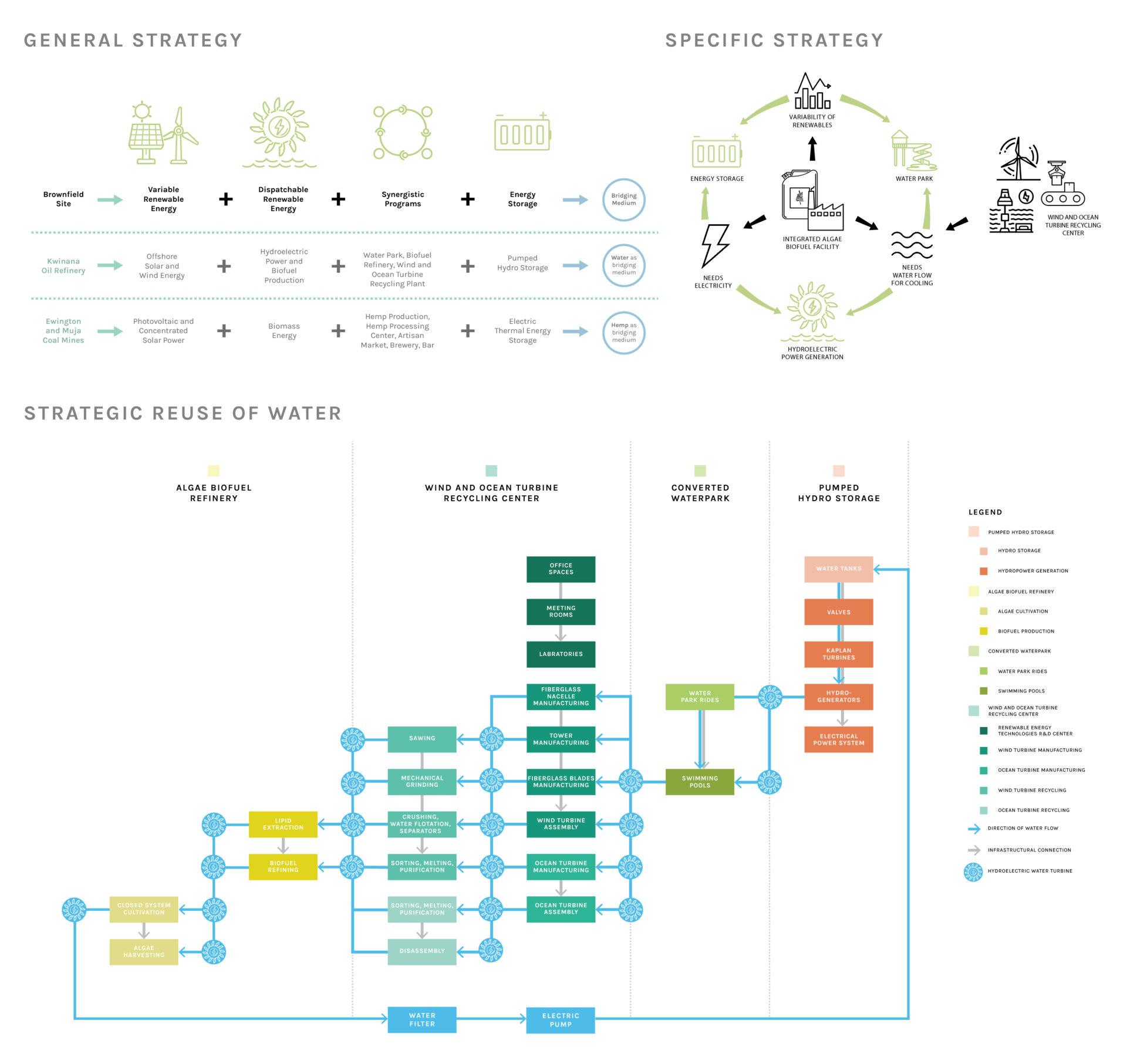
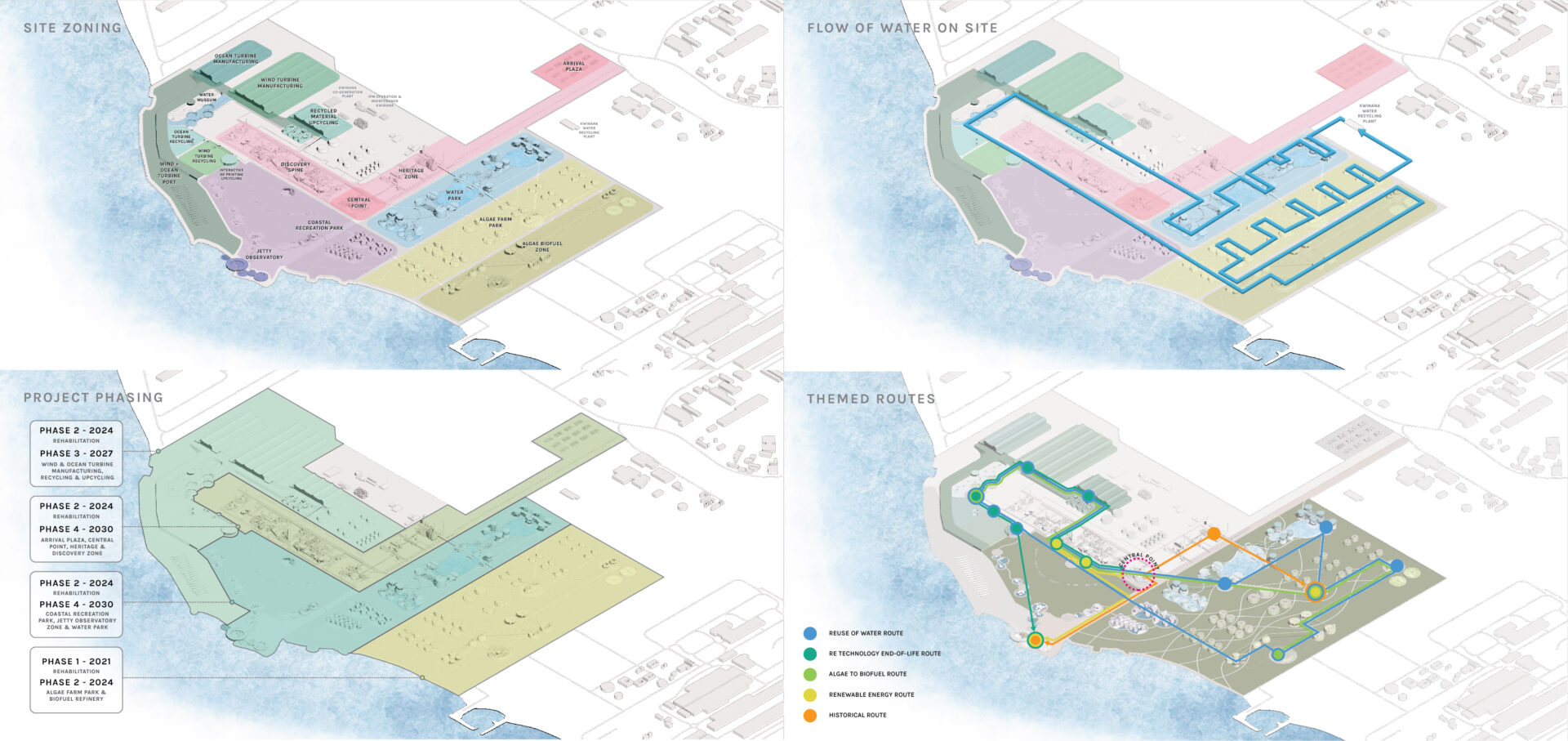
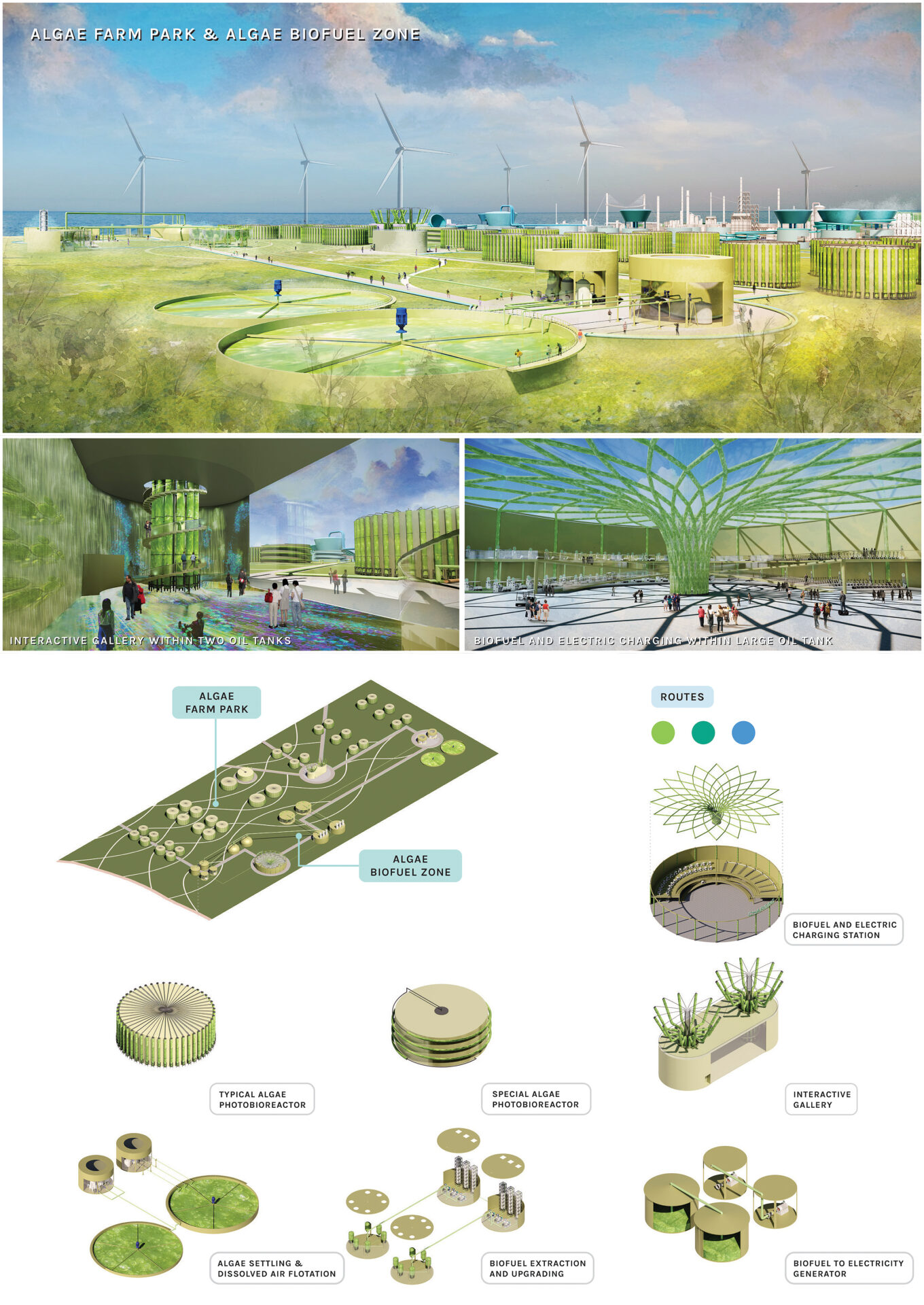
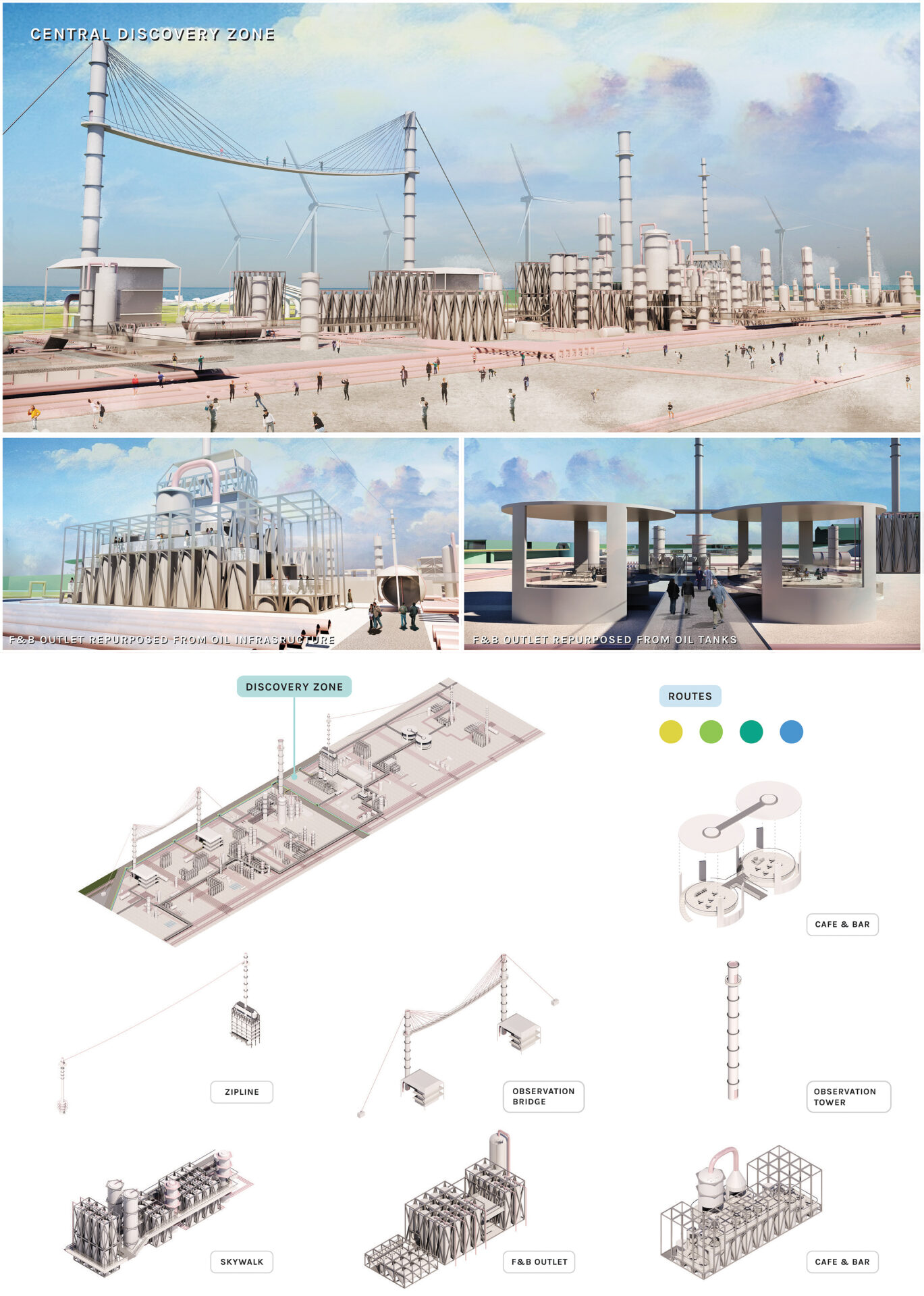
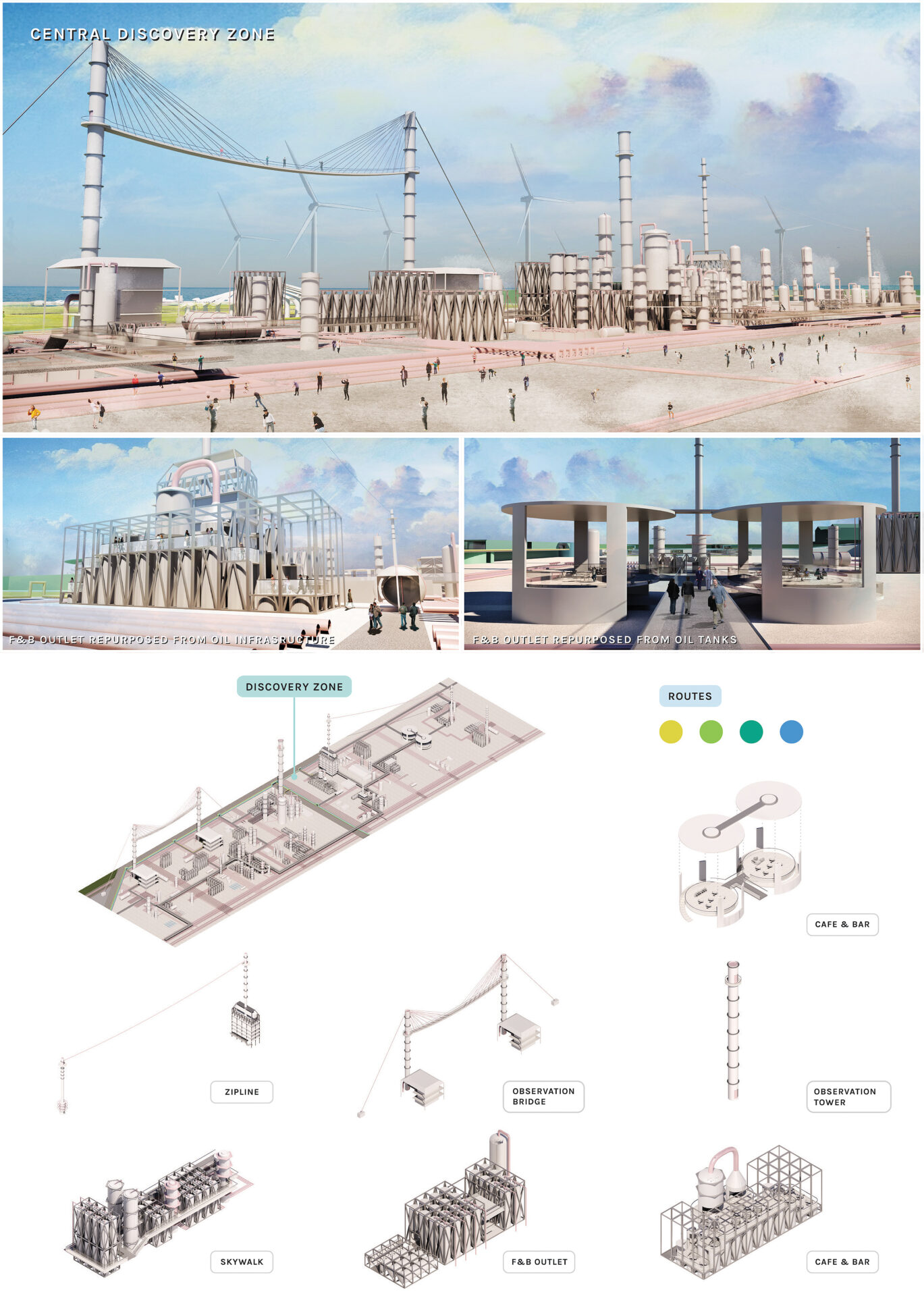
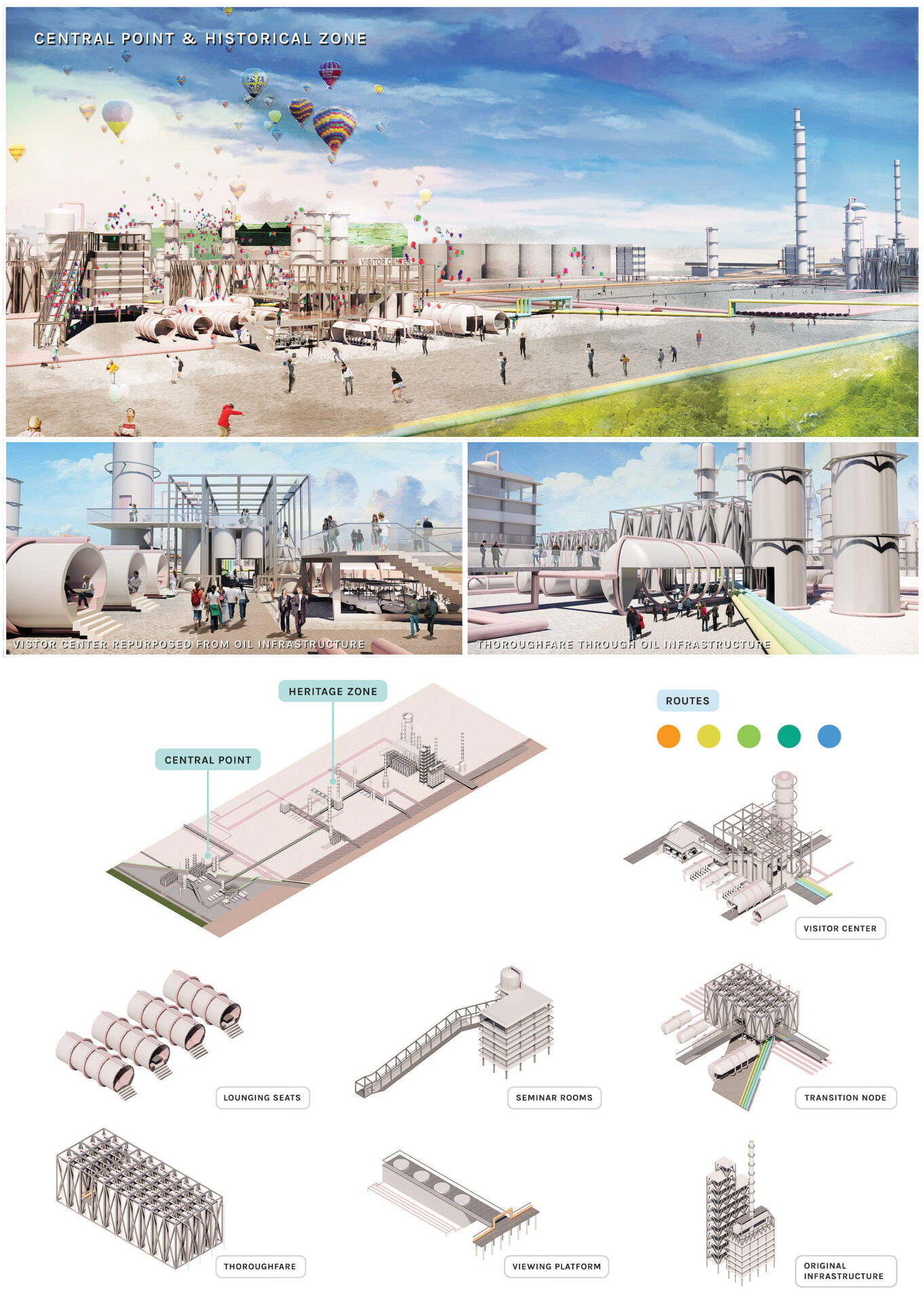

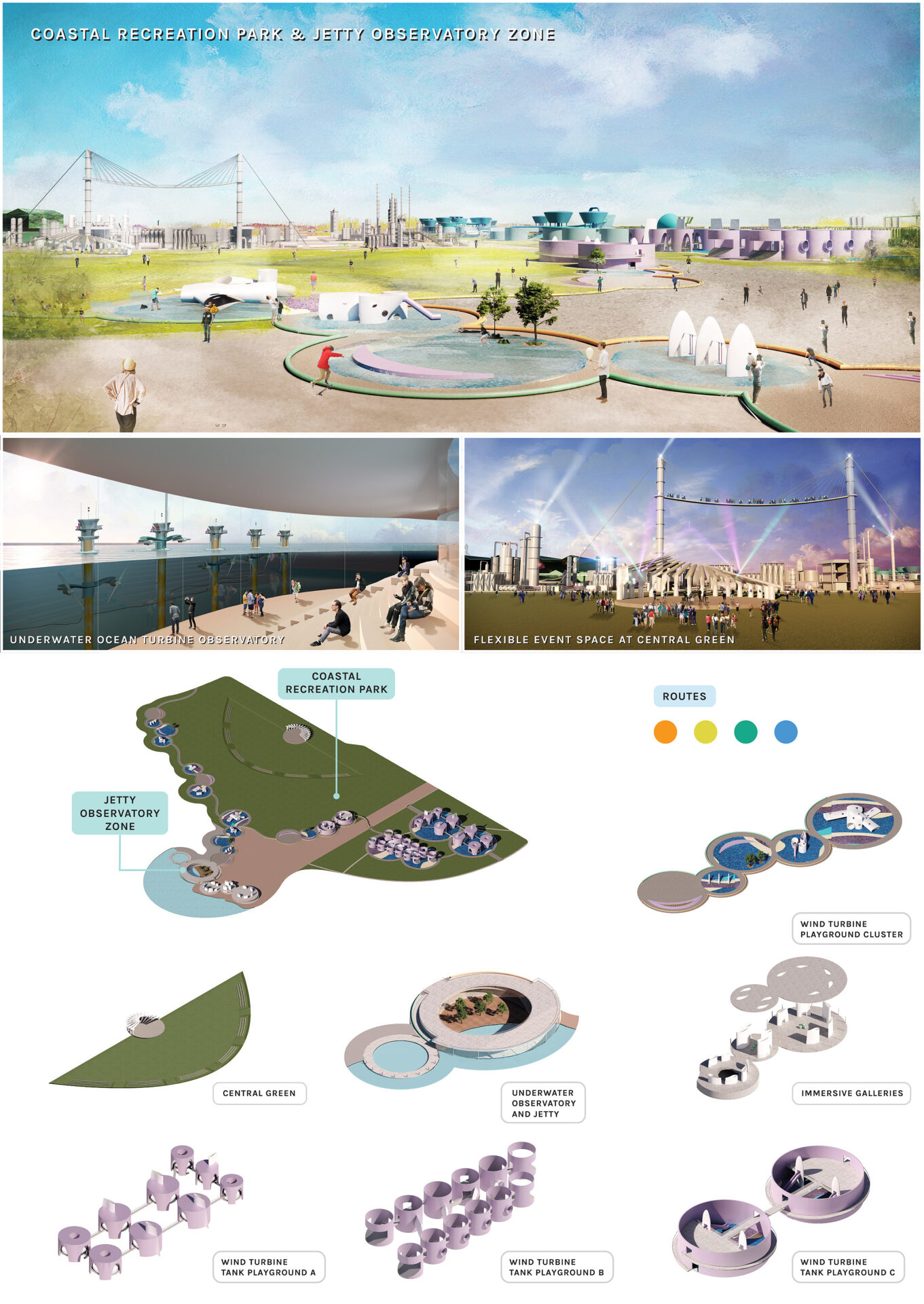
Supervisor's comments:
Spanning from regional planning all the way to architecture and landscape design, this thesis is a very rare piece that powerfully demonstrates multi-scale, cross-disciplinary research and design. In this way, it challenges many conventions as well as stigmas associated with M.Arch education. Coupled with, and also driven by, this multi-scale approach, Sharmaine’s work further showcases how in-depth and concrete research could inform planning and design decisions at different stages, especially when dealing with an uncharted issue like carbon neutral renewable energy generation in this thesis.
- Senior Lecturer Zhang Ye (Dr.)